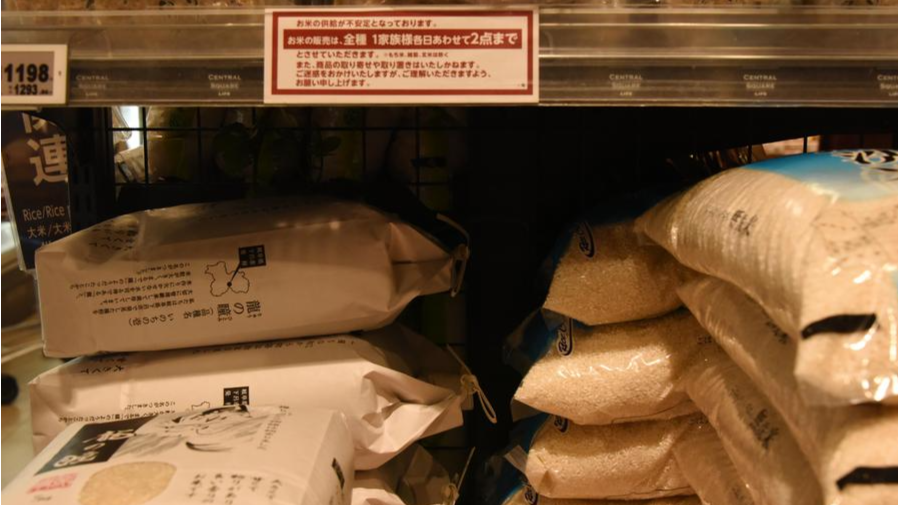
Japan will sell additional stockpiles of rice at a fixed price with an aim to halve soaring costs, newly-appointed agriculture minister Shinjiro Koizumi said as the country heads toward a summer election.
The government aims to release an additional 300,000 metric tons of its stockpiled rice with negotiated contracts at a set wholesale price of around ¥10,000 per 60 kilograms, according to the agriculture ministry. That should halve the retail price to about ¥2,000 per 5 kilograms, down from its current average of ¥4,268 per 5 kilograms, the ministry said.
“It’s not possible to respond to the people’s needs if we were to repeat what we have always done,” Koizumi said Monday, as he announced that the government would abandon its past method of selling its rice stockpile as a competitive bid. The fixed-price cheaper rice could appear in storefronts by early June, Koizumi said.
READ MORE: Japanese consumers turn to rice alternatives as prices rise
The push to control the runaway price of the staple grain, which has doubled in the past year, comes as consumers feel the pinch from rising living costs ahead of a upper house election that could further hurt Shigeru Ishiba’s minority government, already on precarious footing following a bruising election defeat last year.
Ishiba’s support rate has recently been trailing around the lowest since he took office in October, with the cost of living remaining a major part of people’s dissatisfaction. The cost of Japan’s staple food jumped 98.4 percent last month, the most in data going back to the 1970s.
“Our most urgent task at hand is without doubt stabilizing the price of rice, as well as ensuring that affordable and good rice reaches the consumers as swiftly as possible,” Koizumi said, adding that the agriculture ministry will set up a team of about 500 people nationwide to work on bringing down prices.
Since March, the government has released over 200,000 tons of the country’s emergency reserve of rice, usually saved for natural disasters, in an attempt to tamp down prices. But only 11 percent have made it to storefronts while the rest have been held up in the supply chain.
READ MORE: Japan will tap emergency rice supplies as prices surge 82%
Rising rice costs have become a hot-button issue for the public, as the cost-of-living crunch hurt regular households. The flurry of change pushed forward by Koizumi comes after the resignation of his predecessor Taku Eto, who fueled public anger by suggesting he has never had to buy rice because he receives them from his supporters.


